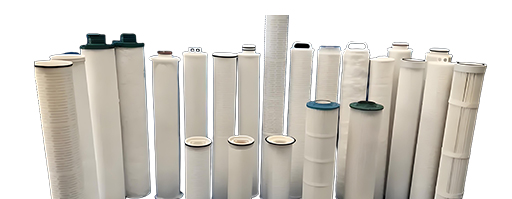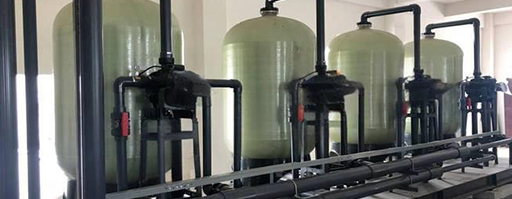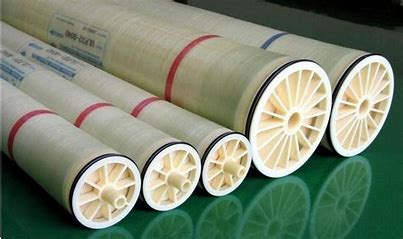LEFILTER Expands Global Footprint with Next-Gen High-Temperature Filtration Solutions for Heavy Industries
Publication time:2025-06-28
Introduction
As global manufacturing sectors intensify their focus on sustainability and operational efficiency, Xinxiang Lifeierte Filter Corp., Ltd. (LEFILTER) is making strategic advancements in high-temperature filtration technology. With a 16-year legacy in fluid purification, the Henan-based manufacturer is now capturing international attention with its patented ceramic and metallic filtration systems, designed to withstand extreme industrial environments while reducing energy consumption and emissions.
The Rising Demand for High-Temperature Filtration
Industrial processes in steelmaking, cement production, and power generation generate exhaust gases exceeding 800°C, laden with particulate matter that damages equipment and pollutes the atmosphere. Conventional filtration methods struggle with:
1. Thermal Degradation: Standard filter media fail above 500°C, requiring frequent replacements.
2. Energy Loss: Poor filtration efficiency forces facilities to recirculate exhaust gases, increasing fuel consumption by 15–20%.
3. Regulatory Pressure: China’s updated Industrial Dust Emission Standards now mandate 99.97% PM2.5 capture, while the EU’s Zero Pollution Action Plan imposes stricter limits on heavy metal emissions.
The global high-temperature filter market is projected to reach $4.5 billion by 2032, growing at a 7.6% CAGR, with Asia-Pacific accounting for 45% of demand due to rapid industrialization in India and Southeast Asia.
LEFILTER’s Breakthrough: Ceramic-Metallic Composite Filters
LEFILTER’s newly developed CTX Series combines ceramic fibers with sintered metal alloys, offering:
1. Unmatched Thermal Resistance – Stable performance at 1,100°C, far surpassing glass fiber alternatives (max 600°C).
2. Self-Cleaning Mechanism – Pulse-jet technology reduces maintenance intervals from weekly to quarterly, cutting downtime by 70%.
3. Emission Compliance – Achieves 99.99% filtration efficiency for PM0.3 particles, exceeding ISO 16890:2025 standards.

A recent deployment at a Jiangsu steel mill demonstrated:
1. 50% lower pressure drop compared to traditional baghouses, saving $120,000/year in energy costs.
2. Zero filter replacements over 18 months, versus 4 changes annually with older systems.
3. Recovered 12 tons/month of iron oxide dust for recycling, generating additional revenue.
Driving the Circular Economy in Heavy Industry
Beyond compliance, LEFILTER’s solutions enable:
1. Waste Heat Recovery – High-temperature tolerance allows integration with heat exchangers, repurposing 30% of exhaust energy for steam generation.
2. Metal Reclamation – Specialized filters capture nickel, zinc, and chromium from flue gases, reducing mining dependency.
3. Carbon Credits – Each CTX unit reduces CO₂ emissions by 1,200 tons annually by minimizing burner recalibration needs.
Global Expansion and Strategic Partnerships
With 138-country distribution networks, LEFILTER is accelerating international growth:
1. Southeast Asia – Partnering with Thai and Vietnamese EPC firms to retrofit cement plants.
2. Middle East – Supplying desert-ready filters for gas processing facilities in Qatar and Saudi Arabia.
3. Europe – Complying with EU Carbon Border Tax via low-carbon manufacturing processes.
"Traditional filters couldn’t handle our 950°C kiln exhaust," noted a plant manager at Anhui Conch Cement. "LEFILTER’s system slashed our maintenance costs by 60% while keeping emissions well below limits."
Future Roadmap: Smart and Sustainable Filtration
LEFILTER’s R&D team is pioneering:
1. AI-Powered Predictive Maintenance – IoT sensors forecast clogging risks 72 hours in advance, optimizing cleaning cycles.
2. Hydrogen-Resistant Materials – Prototype filters for green steel hydrogen reduction furnaces (2026 rollout).
3. Bio-Based Filter Media – Collaborating with Zhejiang University on plant-derived nanofibers to replace synthetic materials.
As heavy industries face escalating decarbonization mandates, LEFILTER’s innovations prove that high-efficiency filtration and profitability can coexist—turning regulatory challenges into competitive advantages.










